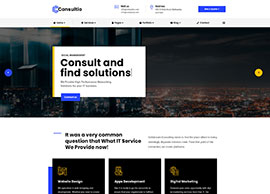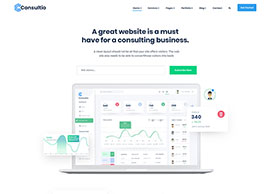In this hot season of startup IPOs, one term we are constantly hearing from pro-startup folks is “Network Effect”. So, what really is a Network Effect, and why do companies burn cash on customers?
What is Network Effect?
While there is no fixed definition to define Network Effect, the term can be used in any context where the intrinsic value of a service or product depends upon the number of consumers using it. Usually, as the number of consumers leveraging a service or product increases, the value of the service or product also increases in tandem. Prof. Bharat of HBS describes it as “The willingness to pay, for a buyer, increases as the number of buyers or sellers for the business grow.”
The Network Effect’s origins can be traced to Metcalf’s law. Metcalf’s law states that ‘the value of telecommunication network is proportional to the square of the number of connected users.
This law can be seen in the case of Western Union; even though Western Union is three times larger than that of its closest competitor, Western Union processes about five times as many transactions. The marginal utility, i.e., the added value by having one extra unit, increases exponentially (to a certain extent), thus giving rise to a substantial competitive advantage over competitors in the market.
In simple terms, consider Zomato as an example. As the number of consumers (people ordering food on Zomato) increases, the revenue increases, Zomato can hire more delivery personnel. As the number of delivery personnel increases, the time to deliver reduces. This reduced time would, in turn, will attract more consumers, and it becomes a vicious cycle of growth.
Now that Network Effect is defined, it is crucial to understand the industries, markets where Network Effect has a substantial effect. Empirically, the Network effect exists in businesses whose model is based upon information or knowledge transfer rather than physical capital. Moreover, this is because of information, many people can use the knowledge at once; economists call such goods non-rival goods. An example is Wikipedia; many can browse the same page on Wikipedia simultaneously. However, the same is not possible with tangible goods, and not many can use a phone at once. Though this is not a rule written in stone, it is very likely to find the Network Effect in business models involving non-rival goods.
Types of effects:
There exist various Network Effects for different business models, Direct network effects, indirect network effects, bilateral network effects, and local network effects. However, major Networks effects are, Direct network effects, indirect network effects.
Direct Network effects: They occur in a business model when the value of a product or service increases due to the increasing number of users of the product or service. This type of network effect can be seen in the case of social media platforms and even in the case of apple, where preferential treatment of iMessage has given Apple a competitive advantage.
Indirect Network Effects: They occur in business models where the platform, service, or product depends on two or more user groups, such as buyers and sellers in case of e-commerce sites like eBay or drivers and commuters in ridesharing apps like uber.
Economic benefits from the network effect
The network effect’s fundamental reason is significant because it provides a lasting competitive advantage to network-based companies. Network-based companies typically tend to create natural monopolies and oligopolies, providing them a strong competitive advantage. As the vicious cycle of growth, the one discussed above, starts gaining traction and becomes more significant, dominant, the services and products with smaller networks get squeezed and soon forced to quit the market. This is the reason why the markets which have network effects are termed as ‘Winner-takes-all’ markets.
Once a company starts leveraging the network effect and gains a substantial market share, it is likely to experience rapid growth rates. Thus, being ahead helps it to stay ahead, and the demand it has, allows its future demand to grow exponentially. Moreover, this demand can be capitalized using specific pricing strategies; the underlying rationale behind pricing strategies reverses themselves when the network effects become strong.
Initially, there is not much emphasis on profits in business models that have network effects; market share is the key driving factor here, as the market share decides the future willingness of a consumer to pay for the product. Thus, until the lion’s share of the market is grabbed, emphasis is not laid on profits, and once the network is strong, the prices are raised, and the profits would grow exponentially. This pricing strategy is clearly visible in the case of Jio, where services were offered for free to gain market share.
Facebook, the social media giant, is another well-known example of a similar pricing strategy utilizing the network effect. In 2004, when Facebook was launched, its services were free to use, this aspect attracted many users, who in turn attracted more users, and the vicious growth cycle took off, and squeezed Myspace out of the market and only after 2007, Facebook started monetizing the network it has made by introducing ads and from 2013, the monetization took off to whole another level, making it the giant it is today.
Network Bridging
Another area where network effects can be leveraged to create lasting competitive advantage is Network Bridging. The knowledge, network of the users of one business can be utilized in multiple scenarios and markets; this can be done through Network Bridging. A firm that has succeeded in utilizing the network effects in one market or industry can venture into new markets utilizing the data and improve its economics. An excellent example for Network Bridging is Alibaba; it bridged its e-commerce platform Tmall with its payment platform, Alipay. This synergy gave both parties of e-commerce a trustworthy platform to transact on, and the data generated from this synergy is used to give credit ratings to buyers. This credit rating was, in turn, used to hand out small loans with meager default rates. The extended loans, in turn, increased the purchases made on Tmall, thus improving the entire business ecosystem.
Can Network Effect go wrong?
Now that we have talked about the advantages Network Effect can provide, it is only fair to understand areas where Network Effect can go wrong. One of the major areas where business models dependent upon network effects can go wrong is network clustering. Network clustering is when a network is fragmented into local clusters, and if these clusters are isolated from one another, then they are more vulnerable to challenges.
Another area of drawback could be through Network Disintermediation. Network Disintermediation happens when the users of a platform bypass the platform and connect with one another after initially meeting through the network. Suppose a user requires a Taxi and books one on the common application. Once the user gets in the Taxi, the user deals with the taxi guy for future usage, thus disintermediating the network.
Network Effect is an essential factor in understanding the value of a business model based on network. Especially in this age of digitalization, where everyone is hyperconnected, and data is the new oil.















































